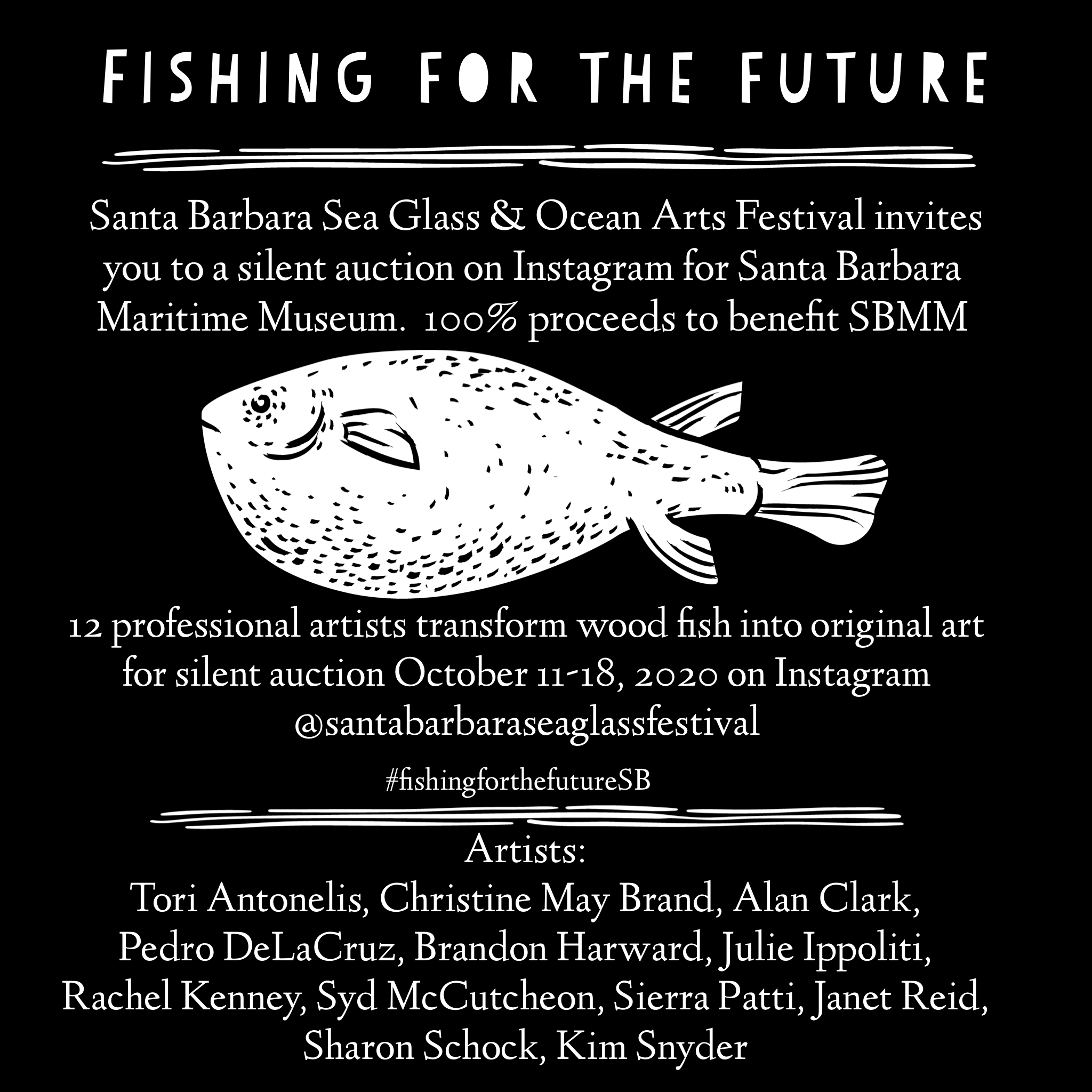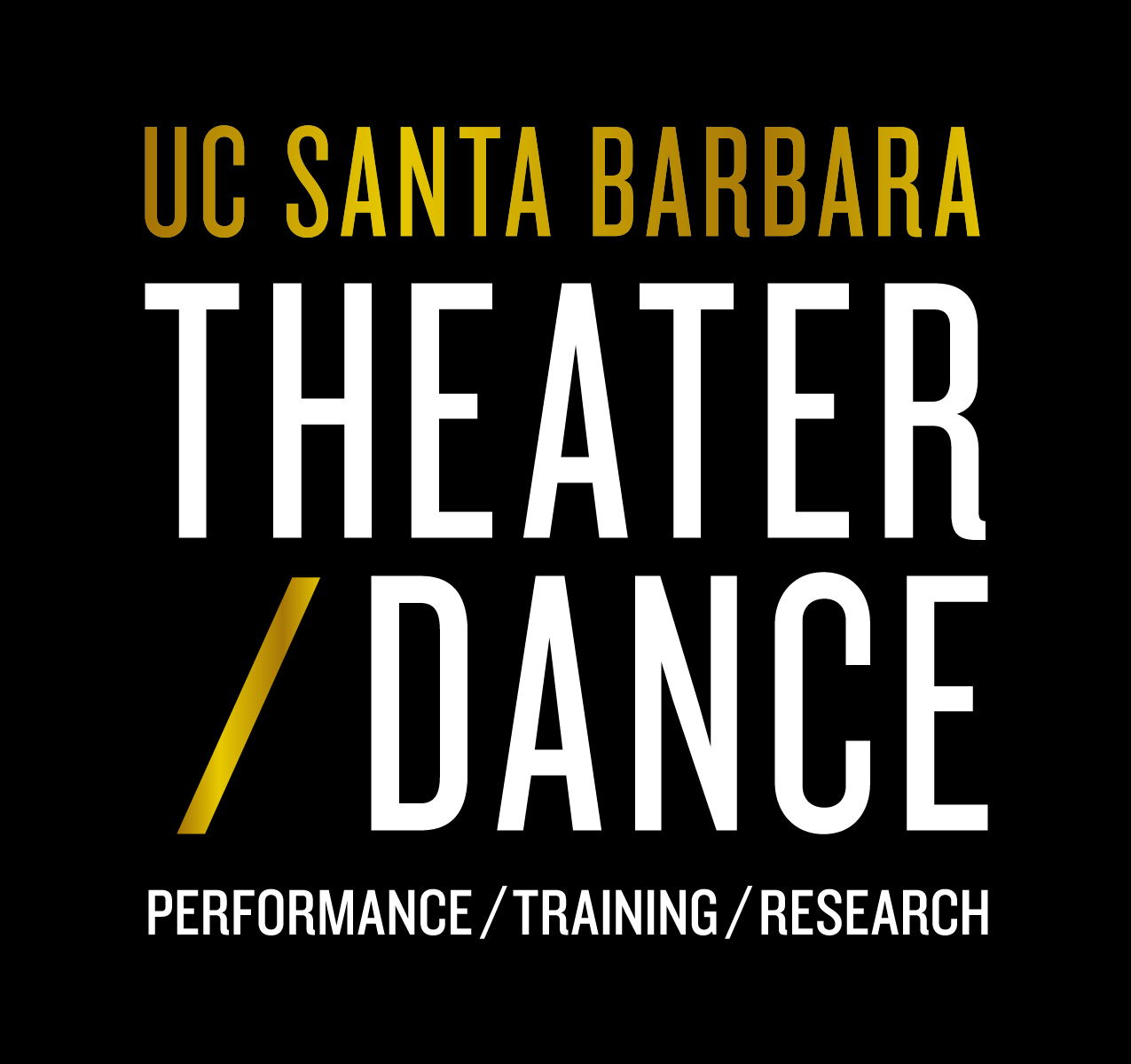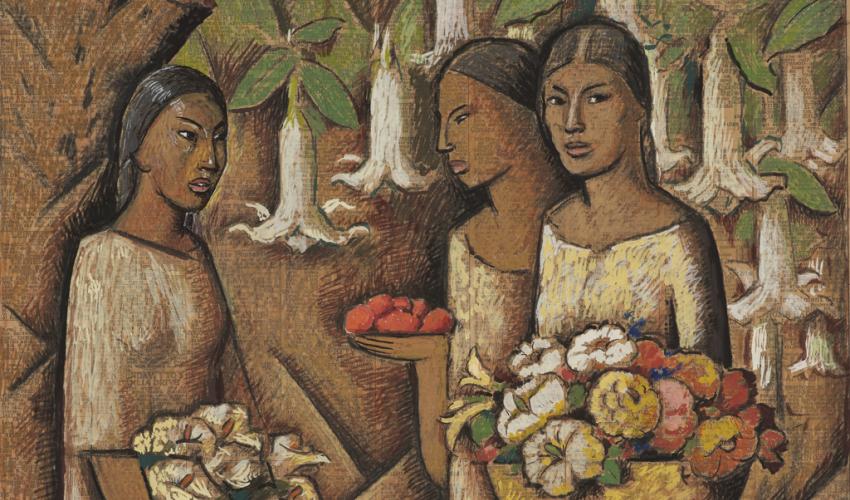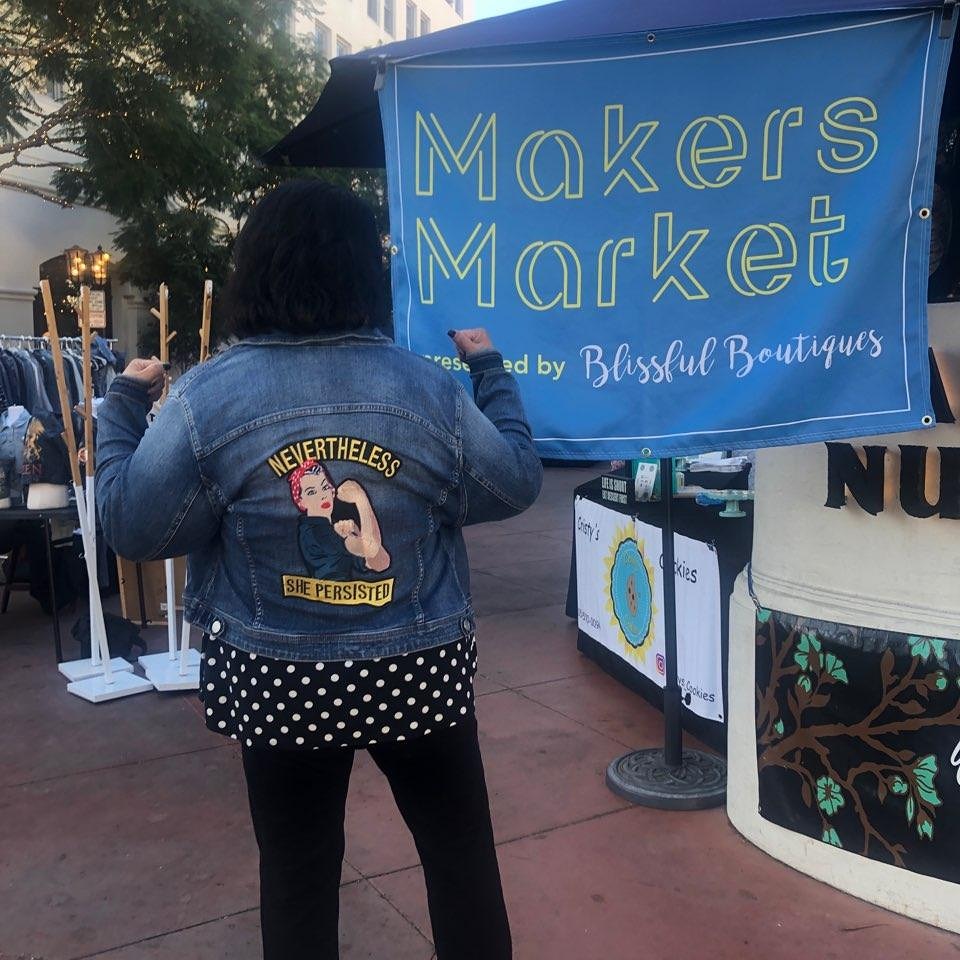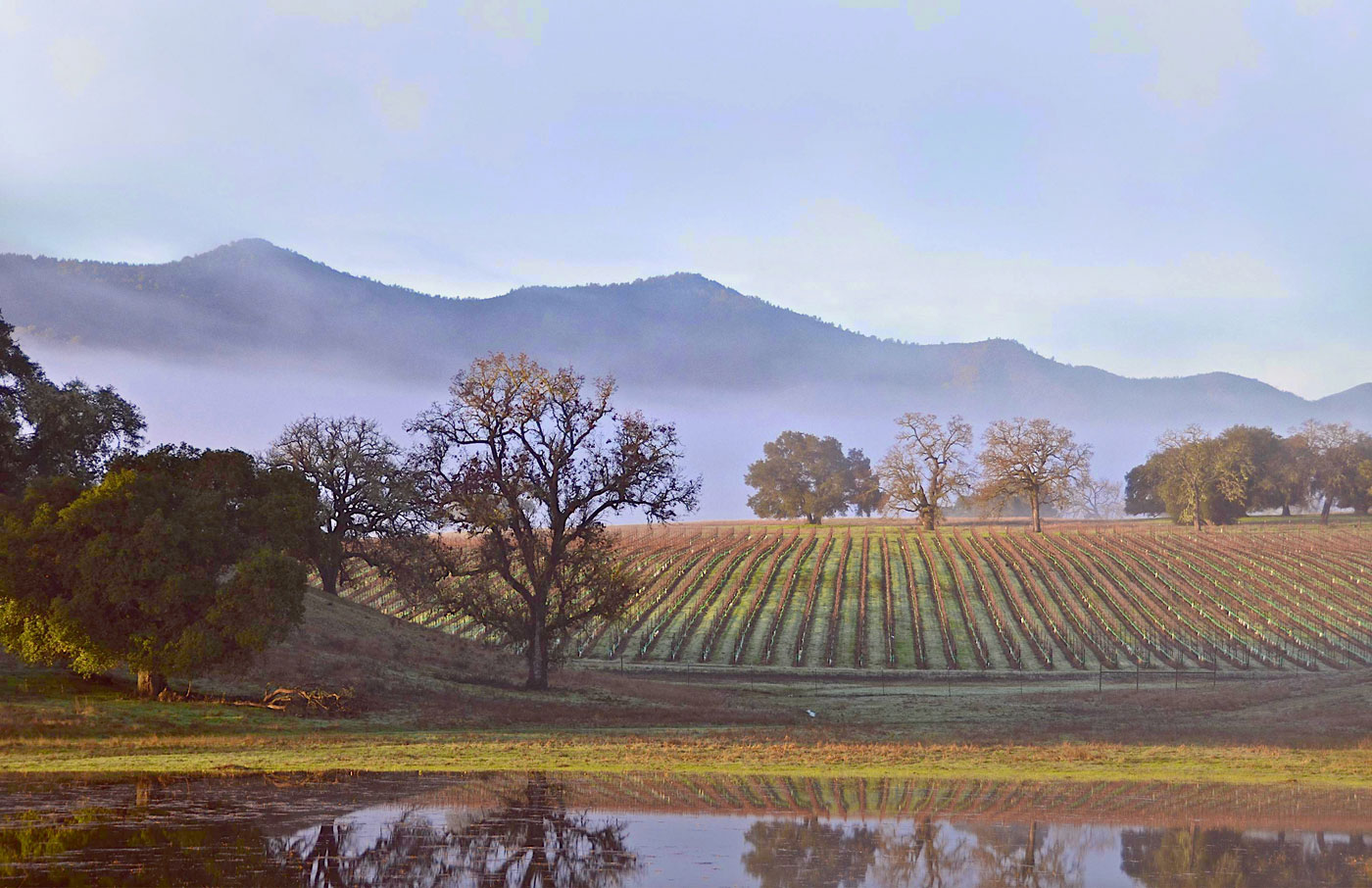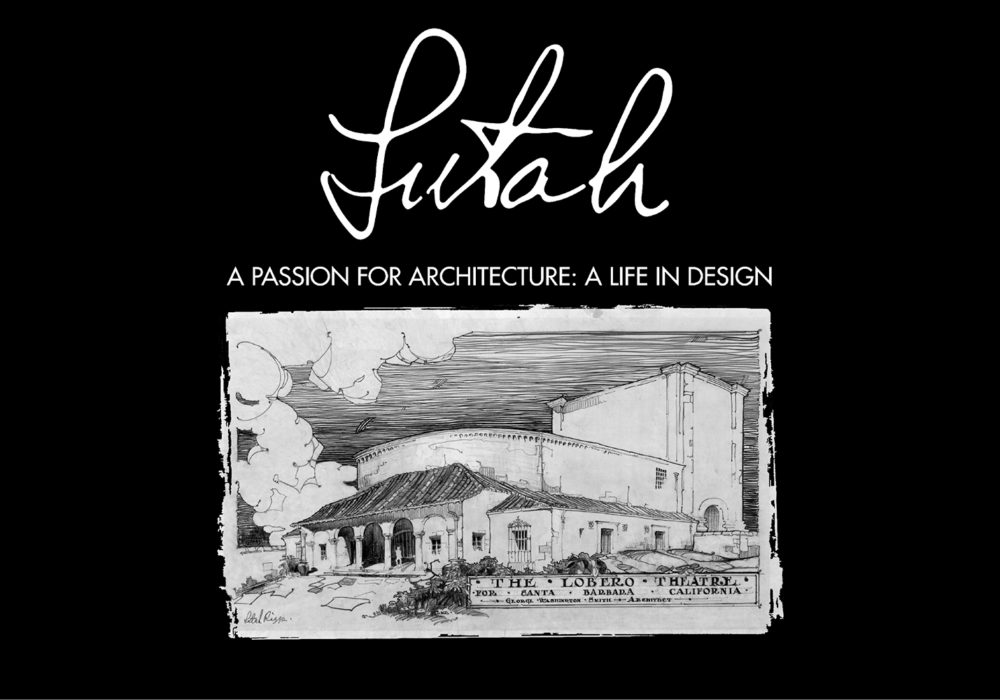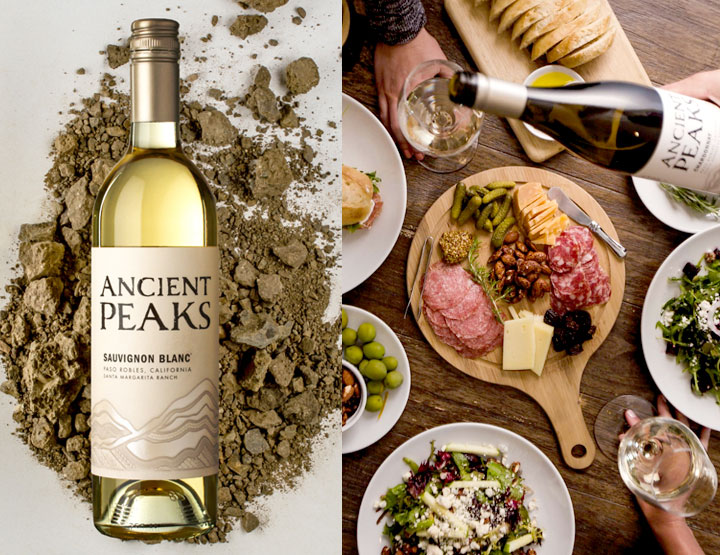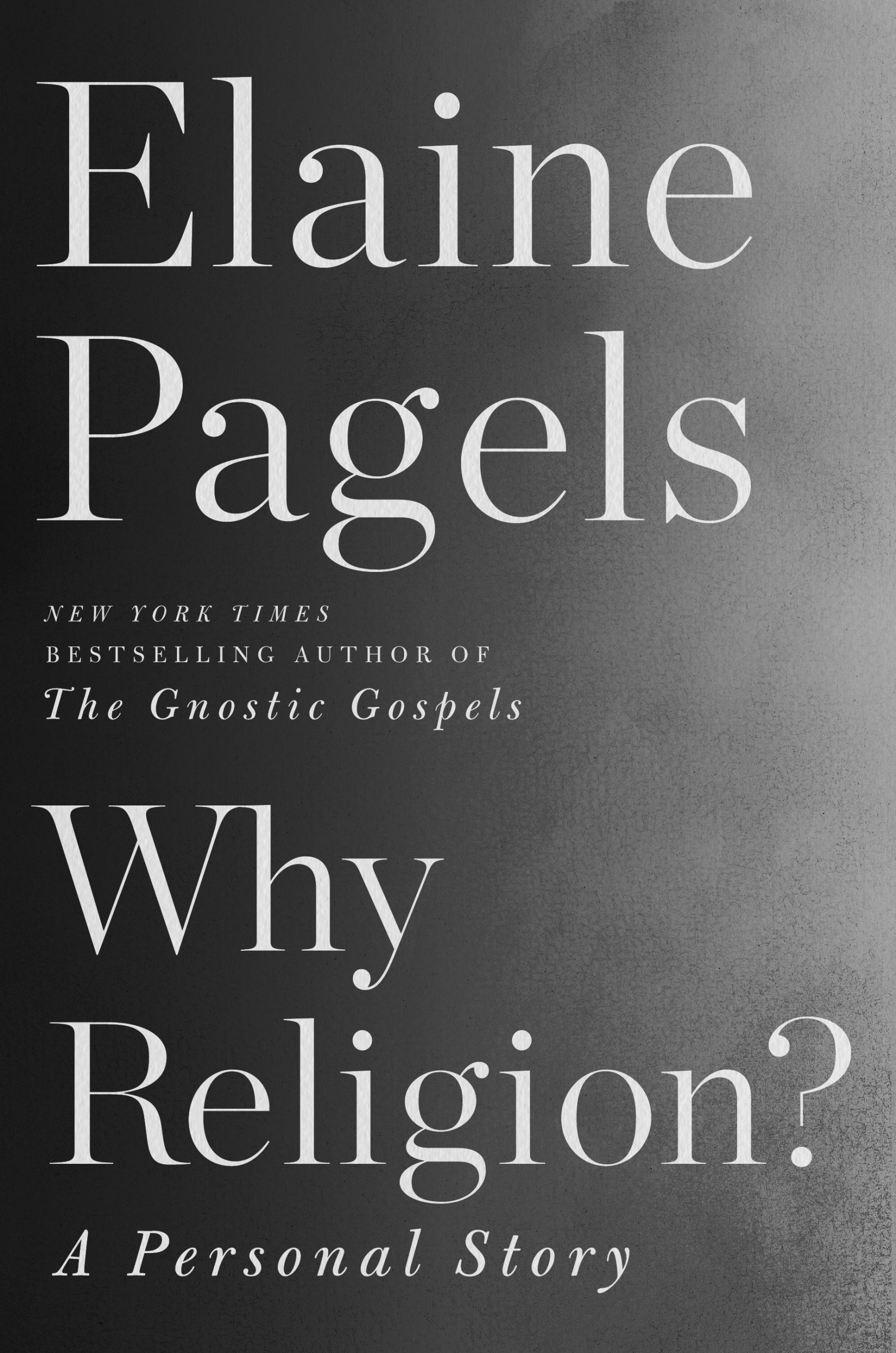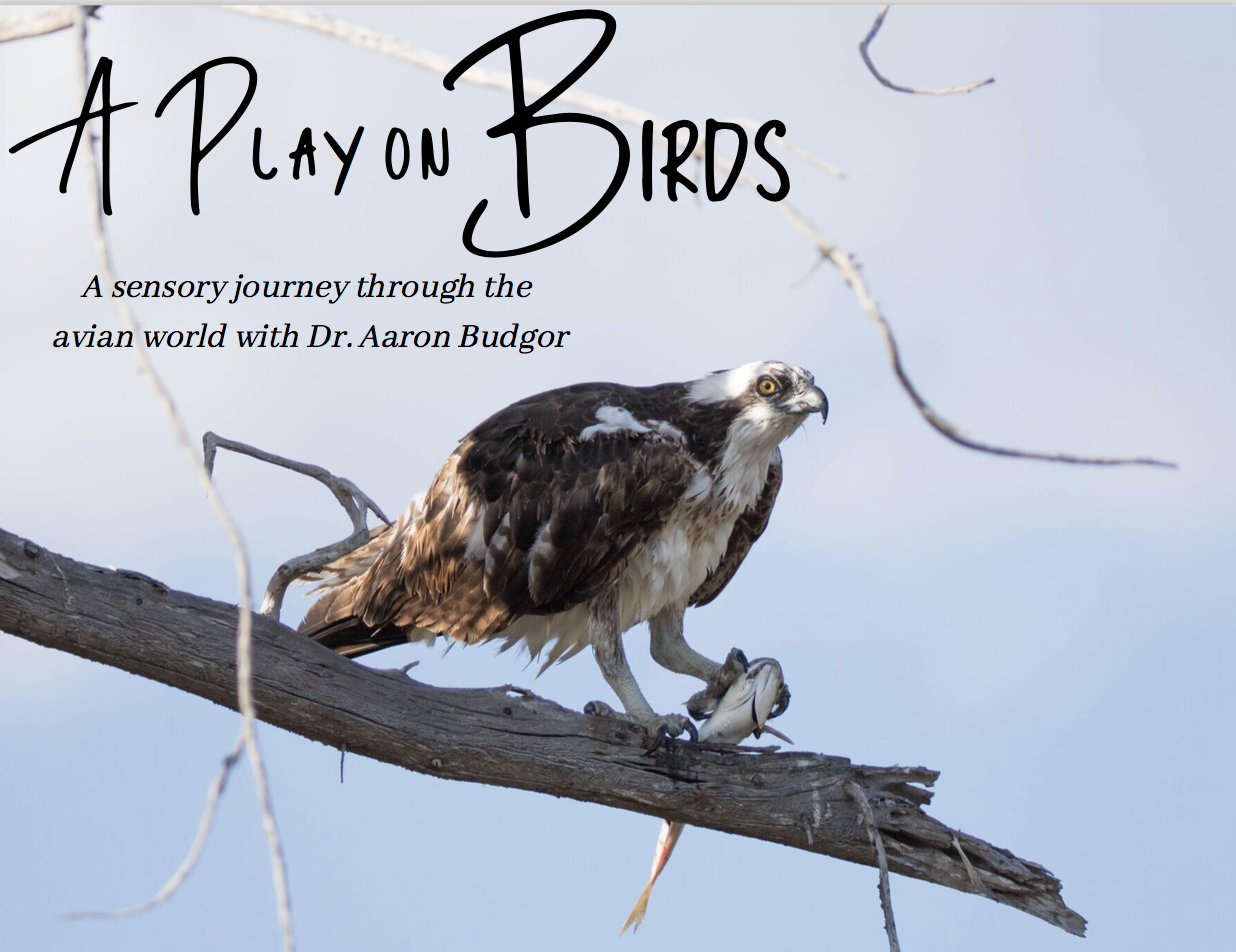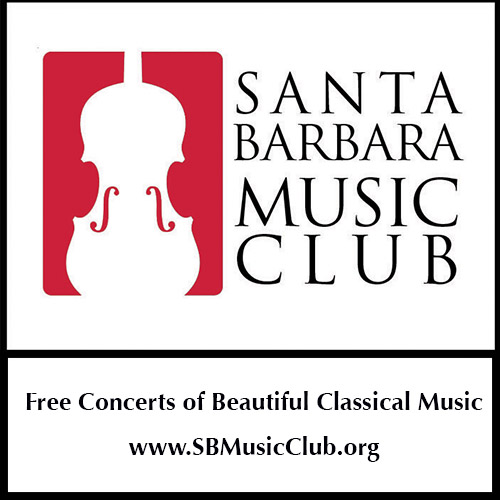Week of Events
FISHING FOR THE FUTURE: Santa Barbara Sea Glass & Ocean Arts Festival announces a silent auction on Instagram to Benefit the San
The Santa Barbara Sea Glass & Ocean Arts Festival (SBSGOAF) is having an Instagram silent auction from October 11-18, with 100% of the proceeds going to @sbmaritimemuseum. The Santa Barbara Maritime Museum has been closed for the duration of the pandemic and may not be able to reopen until the end of the year. We wanted to help them out, and we are hoping you will support our efforts. 12 amazing professional artists are transforming wood fish into beautiful original art for you to bid on!
Hookman by Lauren Yee
Hookman by Lauren Yee
Directed & adapted by Michael Bernard
An early play by a rising contemporary playwright, Hookman has been described by some as a “slasher comedy.” Sometimes mysterious, often hilarious, Hookman is a biting story of teen angst and loss.
URL: https://www.theaterdance.ucsb.edu/news/event/747
Event Price: $13-19
UCSB Performing Arts Theater
FEB 15, 2020 / 1PM, 7PM
FEB 18 - 20, 2020 / 8PM
FEB 21 - 22, 2020 / 7PM
FEB 22 – 23, 2020 / 1PM
The Observable Universe: Visualizing the Cosmos in Art
By definition, the observable universe comprises all matter that can be seen or captured with current technologies. As vast and all-encompassing as that may seem, it still presumes a specific perspective from which all else is viewed and conceptualized—one afforded by the particular viewpoint of being on earth. Our unbridgeable physical distance from other cosmic entities, including the infinite reaches of other galaxies, has forced artists to look to observational sciences like astronomy for inspiration and employ experimental methods to conceptualize the vastness of outer space. In astronomy, there are multiple methods used to visualize celestial objects. Similarly, artists’ perceptions of the universe vary widely, inspired by a variety of cosmological models.
Drawing primarily from SBMA’s permanent collection and supplemented by loans from area collections, "The Observable Universe" explores a diverse range of artistic representations of the cosmos roughly coinciding with the ‘Space Age’ of the last sixty years. From early fascinations with space travel to philosophical questions of humankind’s place within the larger universe, the artwork featured in this exhibition reflects an enduring captivation with outer space and the mesmerizing imagery that the limitless cosmos inspires.
Alfredo Ramos Martínez: On Paper
Alfredo Ramos Martínez (1871–1946) was a pivotal figure in the modernist development of Mexican art. He spent his formative years immersed in the artistic life of Paris, returning to Mexico in 1910 on the eve of the country’s Revolution. After becoming director of the famed Escuela Nacional de Bellas Artes in Mexico City, he established the nation’s first open air schools and encouraged his pupils to create work that captured observations of daily life. In 1929, Ramos Martínez and his family relocated to Los Angeles. For the next two decades, his subject matter focused on the people and culture of Mexico, with the artist receiving many notable mural commissions throughout Southern California. His canvases depict indigenous traditions, local crafts, and religious icons painted in striking hues of umber and sienna accented by bold highlights of color.
While Ramos Martínez was celebrated as a painter, some of his most iconic works of art were created on paper. Said to have always carried a Conté crayon in his pocket, the artist frequently drew on newspaper—the printed columns of text supporting totem-like figures of flower vendors. Working in combinations of gouache, charcoal, Conté crayon, and watercolor, he perfected a signature style in which forms were reduced to essentials to create a structural scaffolding across the paper’s surface. "Alfredo Ramos Martínez: On Paper" is an intimate exhibition of works from the Santa Barbara Museum of Art’s permanent collection. Comprising six drawings, as well as two serigraphs created by his wife María Sodi de Ramos Martínez after his death, the exhibition showcases the artist’s extraordinary draftsmanship, revealing the layered sensibility in his chosen themes.
Alfredo Ramos Martínez: On Paper is curated by Rachel Heidenry, Curatorial Assistant, Contemporary Art, and presented in both English and Spanish in the Works on Paper room of SBMA’s Ridley-Tree Gallery.
Image: Alfredo Ramos Martínez, "Mujeres con flores (Women with Flowers)" (detail), ca. 1946. Tempera and Conté crayon on newsprint / Tempera y crayón Conté sobre papel periódico. SBMA, Gift of the P.D. McMillan Land Company, 1963.32.1 © The Alfredo Ramos Martínez Research Project.
Alfredo Ramos Martínez: On Paper
Alfredo Ramos Martínez (1871–1946) was a pivotal figure in the modernist development of Mexican art. He spent his formative years immersed in the artistic life of Paris, returning to Mexico in 1910 on the eve of the country’s Revolution. After becoming director of the famed Escuela Nacional de Bellas Artes in Mexico City, he established the nation’s first open air schools and encouraged his pupils to create work that captured observations of daily life. In 1929, Ramos Martínez and his family relocated to Los Angeles. For the next two decades, his subject matter focused on the people and culture of Mexico, with the artist receiving many notable mural commissions throughout Southern California. His canvases depict indigenous traditions, local crafts, and religious icons painted in striking hues of umber and sienna accented by bold highlights of color.
While Ramos Martínez was celebrated as a painter, some of his most iconic works of art were created on paper. Said to have always carried a Conté crayon in his pocket, the artist frequently drew on newspaper—the printed columns of text supporting totem-like figures of flower vendors. Working in combinations of gouache, charcoal, Conté crayon, and watercolor, he perfected a signature style in which forms were reduced to essentials to create a structural scaffolding across the paper’s surface. "Alfredo Ramos Martínez: On Paper" is an intimate exhibition of works from the Santa Barbara Museum of Art’s permanent collection. Comprising six drawings, as well as two serigraphs created by his wife María Sodi de Ramos Martínez after his death, the exhibition showcases the artist’s extraordinary draftsmanship, revealing the layered sensibility in his chosen themes.
Alfredo Ramos Martínez: On Paper is curated by Rachel Heidenry, Curatorial Assistant, Contemporary Art, and presented in both English and Spanish in the Works on Paper room of SBMA’s Ridley-Tree Gallery.
Image: Alfredo Ramos Martínez, "Mujeres con flores (Women with Flowers)" (detail), ca. 1946. Tempera and Conté crayon on newsprint / Tempera y crayón Conté sobre papel periódico. SBMA, Gift of the P.D. McMillan Land Company, 1963.32.1 © The Alfredo Ramos Martínez Research Project.
Twelve Days of Engagement: Holidays for Everyone!
Experience an Abundance of Holiday Celebrations Reflecting Many Faiths and Traditions at the Unitarian Society of Santa Barbara’s Annual “Twelve Days of Engagement” Event Calendar
Blissful Boutiques Makers Market
Makers Market is the best outdoor market that Santa Barbara has to offer. Meet the artisans in person. This market offers unique one of a kind items in an outdoor European style setting.
Wine Weekend – Inside Wine Santa Barbara
The not-for-profit wine tasting group Inside Wine Santa Barbara offers a Wine Weekend of activities. Join in all or one of our events! www.meetup.com/Inside-Wine-Santa-Barbara
Veterans Yoga Project – Mindful Resilience for Trauma Recovery
Immersive training in an evidence-based approach to teaching yoga for recovery from post-traumatic stress and related challenges (15 CEU).
Lutah
Lutah
LUTAH explores the life of a little known architect who left a big legacy. She designed iconic buildings such as the Lobero Theatre, Vedanta Temple, and the Botanic Garden and was integral to rebuilding a damaged Santa Barbara after the 1925 earthquake. Lutah designed exquisite homes in many styles for some of Santa Barbara’s greatest philanthropists and spent hundreds of volunteer hours laying the foundation for the Santa Barbara Landmarks Commission. She did all of this as an independent woman at the turn of the 20th century.
This is the untold story of Lutah Maria Riggs.
Lutah navigated her way through the male-centric world of architecture and brought a fresh take to the established architectural styles of Southern California. From Spanish Colonial Revival to Art Deco, to Modernist and back to Traditionalism, Riggs mastered the art of experimentation. Her attention to detail, use of new materials, environmental concerns, and love of the natural landscape brought a unique and specific quality to her work. As one of her contemporaries said, “With Lutah, there was no such thing as impossible; it just took a little bit longer.”
For 60 years Lutah blazed a trail for architects and women, relying on the courage of her convictions and a hint of eccentricity. In a time when most women’s highest expectation was marriage Riggs pursued her passion and created a life of independence, an exceptional choice for a woman at that time. In addition to her buildings, Lutah also left a legacy: She was a self-made woman who boldly overcame barrier after barrier.
LUTAH offers never before seen photos and journal entries from Riggs’ personal collection, and candid interviews reveal the woman behind the drafting table. With stunning footage of some of Santa Barbara’s most iconic structures and a rare glimpse of private homes, LUTAH sheds light on true Santa Barbara treasures.
Winemaker Tasting/Lunch Ancient Peaks w Inside Wine SB
Winemaker Tasting/Lunch Ancient Peaks w Inside Wine SB
Wine tasting with "rock star" winemaker includes lunch—with Inside Wine Santa Barbara
Reconstructing Slippages in Time: Between Home and Here – Ann Le
Reconstructing Slippages in Time: Between Home and Here – Ann Le
Exhibit/MCC Lounge: Mon, Jan 6th
Reception/MCC Lounge: Tues, Jan 7th, 6 PM
Ann Le has always dealt with identity, culture, family history, and the duality of becoming Vietnamese-American in her work. As layers of images are stacked upon one another, Le travels through time commenting on the idea of home, displacement, separation, and how we embrace and conquer loss. Tragic and Poetic composites are pieced together to unravel narratives which places her Vietnamese-American perspective into a contemporary landscape.
This exhibit will run from January 6th until the end of the quarter. The reception will be held Tuesday, January 7th, at 6 PM in the MCC Lounge.
contemporary art UNLOCKED
contemporary art UNLOCKED
How do you “read” art? Learn to look closely and brush up on your visual literacy skills in our new series of monthly one-hour art appreciation meetup.
Elaine Pagels in Conversation with Pico Iyer
This week “Solutions News Radio” will welcome Dave Sansone
This week “Solutions News Radio” will welcome Dave Sansone
WHAT: This week’s “Solutions News” live radio broadcast will interview David Sansone, Agroforestry and permaculture designer.
WHEN: 5 to 6 p.m. Friday, Jan. 10, 2020
WHERE: Tune in to KZSB, AM 1290.
A Play on Birds
A Play on Birds
Join savvy global birder and photographer, Dr. Aaron Budgor on a delightful exploration of bird senses.
https://ensembletheatre.com/rental-shows/a_play_on_birds
Santa Barbara Music Club 50th Season of Free Concerts
Santa Barbara Music Club 50th Season of Free Concerts
On Saturday, January 11 at 3:00 p.m. the Santa Barbara Music Club will present another program in its popular series of beautiful classical-music concerts. Today’s program includes flutist Suzanne Duffy and pianist Kacey Link performing Ernst (Ernő) von Dohnányi’s Aria, Op. 48, No. 1, the world premiere of Katherine Saxon’s Forgotten Memories, and the Cantabile et Presto by Georges Enescu. Next, Eric Valinsky plays his Sonata No. 5, “Harsher Landscapes,” followed by Neil Di Maggio’s interpretation of the Johannes Brahms Rhapsody in E-flat, Op. 119, No 4 for piano. The program concludes with Andrea and Neil Di Maggio’s performance of Carl Reinecke’s Ballade for flute and piano. This concert will be held at First United Methodist Church, 305 E. Anapamu Street at Garden, Santa Barbara. Admission is free.
Amid the surge of Modernism, Hungarian composer Ernst (Ernő) von Dohnányi (1877–1960) distinguished himself as a paragon of Romanticism. His style remained consistent through his last opus number, which includes the Aria, Op. 48, No. 1, for flute and piano, performed this afternoon by flutist Suzanne Duffy and pianist Kacey Link. Dohnányi dedicated the Aria to the virtuoso flutist Ellie Baker, who wrote the work is “a billowing and passionate little piece brimming with romance and longing.” She continues that the work recalls the music of Brahms, a towering figure in Dohnányi’s formation as a composer.
Suzanne Duffy and Kacey Link continue with the world premiere of Katherine Saxon’s (b. 1981) Forgotten Memories. The composer offers the following words about the piece: “Memory is fallible, imprecise and changeable. Each time we draw a memory to the fore of our mind we re-remember it, changing details and forgetting others. Memories can be fabricated: childhood photographs and stories create memories of memories we have forgotten … My father’s ancestors fled the Russian Empire during the 19th century during implementation of anti-Semitic policies. Immigrants, refugees, or even, perhaps, fugitives, they changed their names like people change clothes, to hide, to blend in, to forget. Through creative forms of remembering and misremembering, this piece reflects on ideas of roots, family, loss, and how, even in the absence of memories, we imagine stories to tell us who we are.”
Duffy and Link conclude their set with the Cantabile et Presto by Romanian composer Georges Enescu (1881–1955), who, by all standards, was a prodigy. His musical pursuits brought him to Paris in 1894—at age 16—and he studied with Massenet and Fauré. Despite his young age, critics considered his music mature. Ten years later, Enescu became a member of the examining committee at the Conservatoire de Paris, and he composed challenging works for students to perform at their juries. Among them was the Cantabile et Presto. The work allows the performers to explore the expressive sonorities and challenges of the instruments in the former movement and virtuosity in the latter movement.
Of Eric Valinsky’s Piano Sonata No. 5, “Harsher Landscapes,” the composer writes: “Harsher Landscapes is dedicated to Clay Taliaferro, who originally commissioned the work in 1979 for a dance he choreographed for the Davis Center Dancers. It was revised and expanded twice, finally in 1983 to produce a concert version. This concert version was choreographed by Lizabeth Skalski for the New American Ballet Ensemble in New York. The piece is in one movement, made up of several small sections, some of which recur, and most of which cover the tonal areas of E major and minor as well as the relative keys of G major and minor. Out of the small sections, three major sections may be discerned: an opening waltz-like section; a slow, meditative section; and a final section, virtuosic and fast, during which the waltz returns. I often think of how at the Music Club we promote our “concerts of beautiful classical music.” I’d like to think that this piece has its moments of beauty, but in all, it portrays a pretty harsh, nasty landscape, perhaps evocative of an intense, passionate relationship gone wrong—which I believe was the unspoken intent of the original choreographer.”
Pianist Neil Di Maggio continues with the Rhapsody in E-flat, Op. 119, No 4, by Johannes Brahms (1833–1897). Brahms composed the work in 1893, towards the end of his life, and grouped it with a set of three additional miniatures. The “Rhapsody” therefore belongs to the Klavierstücke, Op. 119—the last set of solo piano works in the composer’s catalog. In the “Rhapsody,” Brahms conveys brightness, joy, and ebullience while exploring a five-bar phrasing structure. The second section contrasts with the first by way of a slower, tender mood. For all the optimism of the piece, however, the piece ends in the parallel E-flat minor. It comes as quite a dark, almost shocking turn.
The prolific German composer Carl Reinecke (1824–1910) gained the admiration of several towering figures in Western art music circles, namely Brahms, Liszt, Mendelssohn, and Schumann. Although the Ballade for Flute and Piano, Op. 288 has not received the acclaim as other works in his oeuvre, it bears the distinction of being his final composition. He wrote the Ballade in 1908 at the age of 84. Like several composers within this afternoon’s program, Reinecke was steeped in the musical world’s inexorable move towards modernity. Yet works like the Ballade, as Andrea and Neil Di Maggio show, demonstrate the notion that several composers held fast to the Romantic idiom.
Santa Barbara Music Club concerts are free to the public, and display a wonderful diversity of historical musical periods and compositional styles, including beloved masterworks and exciting new and seldom-heard repertoire. Of the series, the Santa Barbara Independent exclaimed: "A beautiful day, a beautiful room, beautiful music ... who could ask for more?" and Gerald Carpenter in Noozhawk.com declared, "Every Santa Barbara Music Club concert that I have ever attended has been a sensory joy as well as a consciousness expansion."
A valued cultural resource in the community since 1969, the Music Club's mission is threefold:
(1) Presentation of an annual series of concerts, free to the public.
(2) Aiding and encouraging musical education by the disbursement of scholarships to talented local music students.
(3) Presentation of community outreach activities, including bringing great music to residents of area retirement homes.
For information on this or other Santa Barbara Music Club programs and performing artists, visit SBMusicClub.org.
InterAct Theatre School for Children – Class sign up for show term
InterAct Theatre School for Children – Class sign up for show term
Class sign-up for musical theater classes leading to performance of 'BROADWAY OR BUST' on March 14, 2020



